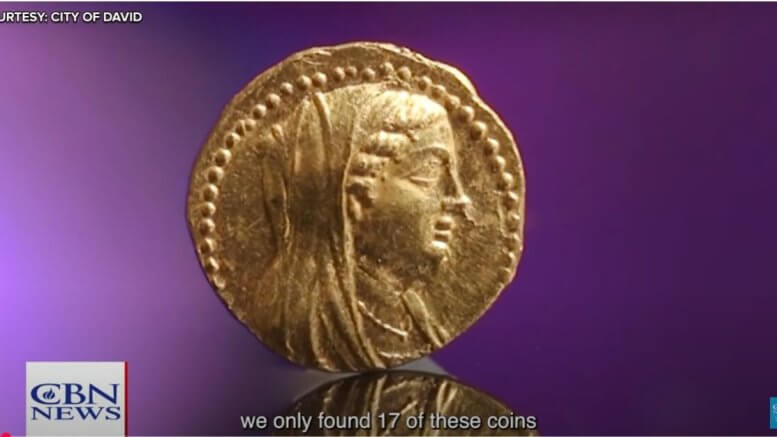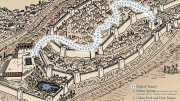Archaeologists in Jerusalem could barely contain their excitement when they unearthed an extremely rare golden coin in the City of David. This extraordinary discovery sheds new light on a mysterious period in Zion’s history—a time just a few hundred years before the birth of Jesus, when little is known about Jerusalem’s life and significance.Watch the CBN Interview with Raj Nair & Israeli tour guide Yoav Rotem
A Golden Coin from Egypt in Jerusalem
The find was made in the Givati Parking Lot excavation, one of the most fruitful digs in the City of David. What archaeologists uncovered was no ordinary coin.
It was a gold quarter-drachma minted 2,200 years ago in Egypt under the Ptolemaic dynasty, descendants of one of Alexander the Great’s generals. On one side, the coin bears the image of Queen Berenice II of Egypt, while the other side depicts the “horn of plenty”—a cornucopia symbolizing prosperity and fertility.
The Israel Antiquities Authority confirmed that this coin is 99.3% pure gold, and only about 20 such coins are known worldwide. Even more significant, this is the first time one has been found outside Egypt, and in a controlled archaeological excavation. Its presence in Jerusalem testifies to the city’s importance during a largely overlooked time in history.
Filling in the “Silent Years”
Much is known about Jerusalem in the days of the First Temple through biblical accounts and prophets like Isaiah. Much is also known from the time of Jesus through the Gospels, Josephus, and Roman records. But the Hellenistic period, between the Old and New Testaments, often feels like a blank page in history.
This was the era after the Babylonian exile and return (Ezra–Nehemiah), when Alexander the Great’s conquests divided the land between Greek rulers in Egypt (the Ptolemies) and Syria (the Seleucids). The Seleucid oppression later gave rise to the Maccabean revolt and the miracle of Hanukkah (John 10:22–23 records Jesus Himself being in Jerusalem at the Feast of Dedication).
Until now, archaeology revealed little about Jerusalem’s role during this 2nd–3rd century BC window. The golden coin proves that Jerusalem was not an insignificant backwater but a city of influence and wealth—engaged in the wider currents of the ancient world.
Why This Matters for Christians
For Christians, this discovery shines a light on the “fullness of time” Paul describes in Galatians 4:4:
“But when the fullness of time had come, God sent forth His Son…”
The so-called “silent years” were not silent to God. He was preparing the world stage for the arrival of Jesus. Greek language and culture, Roman roads and government, Jewish expectation of deliverance—all of these converged to make the first century the perfect time for the Gospel to spread.
This coin is a reminder that God’s covenant people were still in the land, still connected to Jerusalem, and still part of His unfolding plan. Even in a season when the prophetic voice seemed absent, God was writing history, ensuring that the Messiah would come to a people and a city deeply rooted in the world’s story.
The City of David: Truth from the Ground Up
Finds like this continue to confirm both the historical accuracy of the Bible and the deep roots of the Jewish people in the land of Israel.
As Israeli guide Yoav Rotem noted:
“The findings merge together and fit exactly and perfectly with the Scriptures. They show my people’s connection to this land across generations—exile, return, destruction, and rebuilding.”
The City of David excavations are giving us an unfolding story. From the First Temple to the time of Jesus, and even through the “silent” centuries in between, layer after layer testifies to the enduring presence of God’s people in His chosen city.
For Christians, it is one more witness that the God of the Bible is faithful to His promises, weaving together history and prophecy, until all is fulfilled in Christ.
CBN News. Because Truth Matters™ Download the free CBN News App: http://cbnnews.com/app
SUBSCRIBE to the CBN News Channel for more: http://youtube.com/c/CBNnewsonline/?s…





